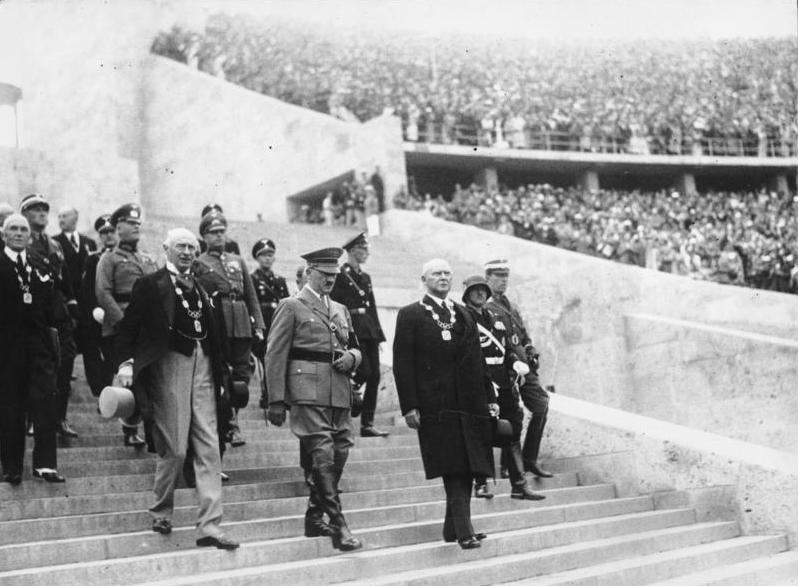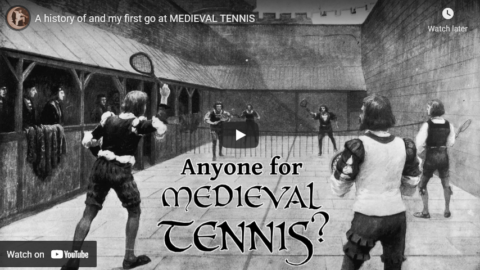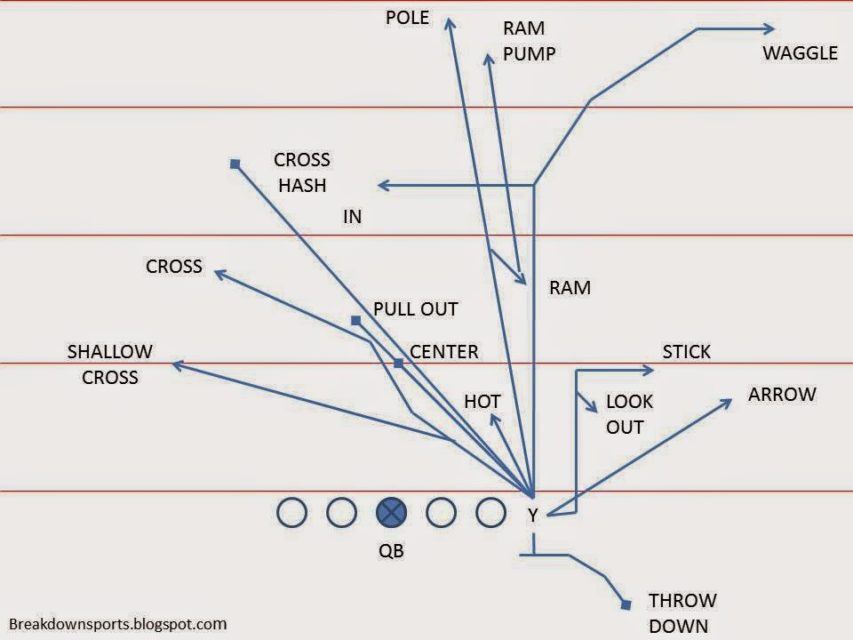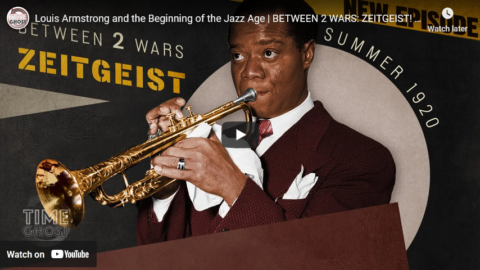Lindybeige
Published 28 Sep 2021Thanks to Audible for sponsoring this video. New Audible members get a 30-day free trial. Visit http://audible.com/lindybeige or text “lindybeige” to 500 500 to try Audible today.
Tennis is a very old sport, going back at least to the 1200s. Here I try my hand at it for the very first (but not last) time, and talk about the history of it a bit.
Many thanks to Jesmond Dene Real Tennis Club (https://www.jdrtc.co.uk) where this was shot.
Editing this took a LONG time. We had three cameras recording at the same time, and synching the footage up took an age. The sound consisted mainly of echoing footsteps and ball bounces, and the fact that the main microphone kept glitching did not help (you will notice some of the patches to the sound using other mics, but most I made fairly smooth).
Court map by Atethnekos at English Wikipedia, CC BY-SA 3.0, https://commons.wikimedia.org/w/index…
Anne Boleyn picture by English school – https://thetudortravelguide.com/2019/…, Public Domain, https://commons.wikimedia.org/w/index…
Support me on Patreon: https://www.patreon.com/Lindybeige
Buy the music – the music played at the end of my videos is now available here: https://lindybeige.bandcamp.com/track…
Buy tat (merch):
https://outloudmerch.com/collections/…Lindybeige: a channel of archaeology, ancient and medieval warfare, rants, swing dance, travelogues, evolution, and whatever else occurs to me to make.
▼ Follow me…
Twitter: https://twitter.com/Lindybeige I may have some drivel to contribute to the Twittersphere, plus you get notice of uploads.
My website:
http://www.LloydianAspects.co.uk
December 29, 2021
A history of and my first go at MEDIEVAL TENNIS
December 28, 2021
QotD: Football, Minnesota Viking style
Little is surprising about a Vikings game filled with mistakes and missed opportunities. But when the Vikings aren’t the team blowing tackles, committing ill-timed penalties and failing to take advantage of an opponent’s errors, things certainly seem amiss.
Tom Pelissero, “Vikings rediscover winning ways”, KFAN Sports, 2005-01-10.
December 19, 2021
“Instant replay” in the NFL
Severian talks about the surprising statistical results when the NFL introduced “instant replay”:
I was a big NFL fan when they first started debating the now-standard “instant replay challenge” rules. Like most people, I was all for it — geez, these refs are terrible, video’s the way to go. My only worry was that if every call those numbnuts obviously screwed up got reviewed, games would last 12 hours …
But a funny thing happened: As with most people, my respect for the refs went way, way up once they put in the video challenge rules. Yeah, they screw up one or two calls per game, the challenges prove that … but that’s one or two out of hundreds, which is a phenomenal success rate. Not only that, even the very toughest calls — the ones that draw the red flags — they get right, or at least not-wrong (football is nothing if not Hegelian), about half the time. Put it through all the techno-whizbangery you want — slow it down to molasses-in-winter speed, run it through one of those Blade Runner image enhancers — and it’s still pretty much a coin toss, at least half the time. And the refs are making those calls at full speed, from dramatically different angles.
In other words, I learned a lesson in applied statistics. Before instant replay, if you’d asked me to guess, as objectively as possible, how many calls per game the refs blew, I’d have said something like “four or five, tops”. (I suppose we must pause here to note, for the benefit of anyone who still follows the NFL for some reason, that I’m not talking about bullshit like the “tuck rule” or whatever the fuck a “catch” is supposed to be these days, which even the refs don’t seem to understand; I’m talking stuff like “Did he fumble?” or “They missed the ball spot by a yard or two”). I certainly wouldn’t go any higher than that, and if you told me that an independent auditing firm had reviewed ten seasons’ worth of game tape and came up with a hard number of 2.6 calls per game, I’d roll with it, no problem.
If you then told me that this represents a “failure rate” of well under 1%, well, I’m not sure I want to go through all the math to check you, but I’d believe it, because I know something about how the game is played. I don’t want to get too far off track here, but for the benefit of casual fans and especially non-American readers, there are 11 men on a football team, and all of them have the opportunity to do all kinds of illegal stuff on every single play. Call it 65 plays per game (the first rough number I could find with a five second internet search), and that’s … well, my math doesn’t go that high, but let’s just say it’s a lot of opportunities for fouls. And that’s not counting all the other stuff refs have to do — that they have the opportunity to get wrong — on nearly every play: Marking the ball spot, determining where a guy went out of bounds, and so on.
The important thing to note is how far my emotional perceptions of the game diverge from statistical reality. Let’s stipulate that all the math up there results in a “success rate” of 99.993%. I’d buy that … Intellectually I’d buy it, because I know a bit about how math works, and a lot more about how football works, but note my first impression when they started talking about instant replay: “Oh God yes, these guys suck, they blow so many calls that games are going to last 12 hours if they review all the calls those lousy refs obviously miss.”
Emotion beats math, every time.
And note that I’m talking about refs in general here. In general, they blow calls all the time (the emotional me said), but when it comes to my team in particular, well, they’ve obviously got it out for us. They screw up an entire season’s worth of calls every time my team plays, and all those screwups go the opponents’ way!
I’m kidding, but I’m not joking. I got to see this process firsthand, and that’s the second lesson instant replay taught me: “Indisputable video evidence,” as the phrase is, don’t mean squat when you’ve got your heart and soul in it.
Every NFL fan knows that the refs hate their particular team and love their most hated rival, and no amount of indisputable evidence will shake that belief. NFL fans are rather like progressives in that way …
December 17, 2021
Those Olympic rings are more than just tarnished
In First Things, George Weigel notes the, ah, Olympian disdain for mere morality and human decency is far from a new thing as the IOC prepares for the Beijing games in 2022:

Google translation of the original German caption: “Before the ceremonial opening of the XI Olympic Games. Together with the members of the International and National Olympic Committee, the Führer and Reich Chancellor enters the stadium through the marathon gate. On the left of Adolf Hitler [Henry] Graf Baillet-Latour, on the right His Excellency [Theodor] Lewald.”
German Federal Archives (Accession number Bild 183-G00372) via Wikimedia Commons.
In July 2016, as we were sitting on the fantail of the Swiss sidewheeler Rhone while she chugged across Lake Geneva, my host pointed out the city of Lausanne, where a massive, glass-bedecked curvilinear building was shimmering in the summer sun. “Isn’t that the headquarters of the International Olympic Committee?” I asked. When my friend replied in the affirmative, I said, “I thought I smelled it.”
That rank odor — the stench of greed overpowering the solidarity the Olympics claim to represent — has intensified recently.
Even the casual student of modern Olympic history knows about the August 1936 Berlin Games, at which America’s Jesse Owens, a black man, took four gold medals and trashed Hitler’s Aryan supremacy myth. Fewer may be aware that, in February that year, the Olympic Winter Games were held in the Bavarian town of Garmisch-Partenkirchen. How, we ask today, could two Olympics be held in the Third Reich? How could people not know?
There was some controversy about holding the summer and winter Olympics under Nazi auspices. But in 1936, the German situation was not as comprehensively ghastly as it would become in later years. Yes, the Dachau concentration camp for political prisoners had opened in March 1933, and the Nuremberg Laws banning Jews from German citizenship and prohibiting marriage between Jews and “Aryans” had been enacted in 1935. The horrors of the Kristallnacht pogrom in November 1938 were two years in the future, however, and the satanic Wannsee Conference to plan the “Final Solution” to the “Jewish Question” would come six years later. Clear-minded people ought to have discerned some of the implications of the Nuremberg Laws. But the industrialized mass slaughter of millions, simply because they were children of Abraham, was beyond the imagination of virtually everyone.
So Hitler and his thugs temporarily behaved themselves (sort of) in the run-up to the Garmisch-Partenkirchen and Berlin Olympics. And the International Olympic Committee could salve whatever conscience it had in those days and proceed with the games.
The IOC has no excuses today, two months before the XXIV Olympic Winter Games open in Beijing. Because today, everyone knows.
October 21, 2021
QotD: Bill Belichick
… coaches were still blitzing Tom Brady and Peyton Manning, who at the time were the best quarterbacks in the league (I guess Brady’s somehow still playing). Which is stupid, because good quarterbacks love getting blitzed. If they pick up on it — which they usually do, being good — a blitz is like an engraved, hand-delivered invitation to score. I have no idea how one goes about stopping Manning and Brady — if I did, I’d rent my knowledge out to a black guy (since no team would ever hire my honky ass) and we’d make millions — but I know one surefire way not to do it … and so does everyone else, and yet, they keep doing it. Are they trying to lose?
Again, this is emergent behavior. If Brady is carving his defense up, the defensive coordinator is under immense pressure to do something, anything, to change the dynamic. He knows that every yahoo in the tv audience is yelling “blitz him!!”, so that’s what the coordinator does, even though he knows full well that a) that’s stupid and counterproductive, and b) so are the yahoos urging him to do it, because if they knew anything worth knowing, they’d be wearing a headset instead of jockeying a barstool. Same goes for the yahoos at ESPN, from the bimbette who’s going to shove a mic in his face at the postgame press conference to the hair-gelled dipshits on the shout shows. “Why didn’t you blitz him?” is going to be the first thing out of their mouths, so again, even though he knows it, and they, are stupid, the coordinator dials up a few blitzes … with predictable results.
Football is a great metaphor for politics, especially in the sense that it’s the supposed experts, the guys who get paid millions of dollars to be innovative and analytical, who are the most allergic to actual analysis and innovation. I guess Tom Brady doesn’t play for the Patriots anymore, but for the sake of rhetorical continuity let’s assume he does, and look at legendary coach Bill Belichick. Much smarter, more knowledgeable folks than me have pointed out that he’s really not all that innovative, in the sense of “coming up with wacky new schemes.” Nor is he a particularly shrewd judge of football talent — for every Tom Brady who falls into his lap (Brady was famously a 6th round pick that Belichick had nothing to do with), or Randy Moss that he seems to rehabilitate for a few seasons, there are other big name free agents who join the Patriots and flame out, or highly touted draft picks that don’t do anything. The two secrets of Belichick’s success seem to be: 1) he actually knows the rules, and 2) he fits his game plans to the game.
#1 seems weird, I know, but here’s an example: A decade or so back, he was facing a rival, Pittsburgh or someone, who had a ferocious defense. Belichick knew that the said ferocious defense would be geared up to stopping TE Rob Gronkowski, who had burned them for a million yards last time. To defeat this, Belichick made sacrifice to his strange and awful gods, meditated in a secret Himalayan ashram with the Black Lotus society, and … checked the weather report, which told him that it would almost certainly be cold and rainy on game night. So then he broke out the rule book, in which he learned that there’s no rule against putting out as many offensive lineman as you want — it’s called a “goal line formation” — and so he simply swapped out Gronkowski for a sixth lineman, and ran the ball all night.
Which feeds into #2. Weather reports aren’t top secret information, and the rule book is literally right there, but everyone watching the game — most especially including the Steelers’ defensive coordinator — acted like Belichick had pulled his game plan straight out of the Necronomicon. They had no idea what he was doing, or any clue how to stop it. Here again, it’s not as if the Steelers’ d-coordinator had never seen a goal line formation before, or the announcers had never witnessed a game being played in the rain. It’s just that … well, he’s Rob Gronkowski. They pay him millions to catch balls and wreck worlds, and he was barely on the field. No other coach would do what Belichick did, because who else would tell a zillionaire glory boy to ride the pine, and expect to be obeyed?
See what I mean? Belichick’s “system” was that he didn’t have a system. He figured out what was most likely to win the game, then did that. Note too that nobody seemed to be baffled that an even richer, even more important glory boy, Tom Brady, was also pretty much useless that night. And again, who but Bill would have the sheer brass balls to tell a surefire Hall of Famer to just hand the ball off over and over and over and over and over …? There’s no question that if it should ever happen that Bill believed he had a better chance of winning a given game without Brady than with him, Brady’s ass would’ve been benched for that game, future Hall of Famer or not.
That’s what I mean about emergent behavior. Both Belichick and the Steelers’ d-coordinator thought they were trying to win the game. Hell, I’m willing to believe that both of them would swear in the very throne room of God Almighty that they did everything they could think of to win. It’s just that Belichick could think of a lot more “anything” than the other guy could, because the other guy felt he had to worry about the dudes on barstools, and the sideline reporterettes, and the jock sniffers on the ESPN rant shows, and Belichick … didn’t. That’s all.
Severian, “Are They Trying to Lose?”, Rotten Chestnuts, 2021-07-15.
October 15, 2021
Alphonso Davies is “CONCACAF’s best player — which is to say, the continent’s best player”
I had been a follower of the Canadian national soccer teams back when I was coaching my son and his friends in U-4 through U-16 house league soccer, but while the women’s team is among the world’s best, the men’s team has always lagged a long way behind. In Thursday’s NP Platformed newsletter, Colby Cosh shows that there’s a very big spark of hope in the person of Alphonso Davies of Edmonton:

Alphonso Davies playing for FC Bayern Munich, 28 April, 2019.
Photo by Granada via Wikimedia Commons.
Reaching the [2022 FIFA World Cup] tournament involves finishing in the top four in an eight-country “octagonal” round-robin tournament that include the best sides from our continental soccer federation, CONCACAF. Last night, Canada faced a critical home match in Toronto against a traditional close rival, Panama, who stood just ahead of us in the octagonal table after a shock 1-0 home win against the United States.
This game wasn’t a very big deal even in dedicated sports media, but if you were paying close attention, you knew this was a crucial match for our World Cup hopes, which have quietly begun to build in the last year or two. Panama has a strong side, strong enough to have qualified for the 2018 World Cup finals ahead of us. But some awesome young Canadian talent is coming into full flower, and our country now possesses, by common consensus, CONCACAF’s best player — which is to say, the continent’s best player.
If anyone doubted the credentials of 20-year-old Edmontonian Alphonso Davies before last night, they have been silenced, if not entombed. Canada fell behind one-nil to Panama early in the match, then equalized shortly before half-time. Panama was lucky, at that point, to stand even, and their players knew it.
That’s when Davies, who had already filled a highlight reel with unstoppable dribbles in the first 45 minutes, put Canada ahead with the most astonishing goal ever scored by any man wearing the national colours. [Twitter link] Let us emphasize: you don’t need to be a soccer fan to appreciate this one. Phonzie’s pursuit and robbery of Panama’s Harold Cummings, who had a 35- or 45-metre head start to a harmless ball on the touchline, resembles nothing so much as the targeting and evisceration of an antelope by a cheetah. Davies then humiliated a second defender and wrong-footed Panama keeper Luis Mejia, who certainly would have made a better effort if his soul hadn’t already departed his body.
The match ended 4-1 in Canada’s favour, with Panama visibly discouraged at the failure of brutal rugby tactics facilitated by a typically inept CONCACAF referee. Davies plays his professional football at Euro-giant club Bayern Munich, and his galactico ability is no secret across the pond. Over here, he has already won (half of) a Lou Marsh Trophy as Canadian sportsman of the year. But one doubts, talking to people who don’t follow soccer, that he has the appropriate degree of fame in Canada yet. He is probably not as famous as Penny Oleksiak, or Bianca Andreescu, or whomever’s the seventh defenceman on the Montreal Canadians depth chart.
Two years ago, the possibility that Davies might one day help drag Canada to a World Cup final or two was a foggy hypothetical for the future. Last night he took a giant step, or several hundred of them, toward doing exactly that. Canada still has to follow through in the remaining half of the octagonal, but the outlook is now good. (Many Canadian national sides might have wilted against Panama after falling behind and being presented with rapacious unpenalized violence, but our manager John Herdman has achieved a deserved new level of respect in the past year, too.)
September 10, 2021
Why even highly gifted young quarterbacks rarely succeed as they move toward the NFL
Severian at Rotten Chestnuts looks at the early career life-cycle of football quarterbacks:
At all levels of American football below pro, the “option” is a major facet of the game. This is an offensive play where the quarterback can either run the ball himself, pitch it to another player, or throw it downfield, as he thinks best. It certainly helps if the quarterback is a strong-armed, accurate passer, but the key criterion here is speed. If you get defenders cheating up in order to stop the run, you don’t have to be as strong or accurate with your throws. What matters is that the QB can pass — meaning, he can throw it X yards downfield, within a few yards’ radius of a given spot — not how often he does so. The closer he can get it to the spot, and the further downfield that spot is, the better, but so long as he’s in the vicinity the option system works well.
This starts very, very early in a player’s career. The lower down the skill ladder you go, the more prominent the “option” offense. In “Pop Warner” leagues — kids below age 12, basically — the option pretty much IS the offense, since few kids can throw the ball very far, much less with accuracy. Throwing a football with both velocity and accuracy is extremely difficult, and it doesn’t help that sound throwing mechanics feel brutally unnatural — you know you’re doing it right when it feels like your shoulder is going to pop out of its socket at the very instant your elbow ligaments snap and hit you in the face … which, unfortunately, is exactly what it feels like when you’re doing it wrong, and your shoulder IS about to pop out at the same moment your elbow ligaments snap.
What happens, then, is that kids generally learn how to throw with very poor form … but coaches generally aren’t going to correct them, either because they don’t know the proper mechanics themselves, or because they are focused exclusively on winning games. Who cares if little Kayden, Brayden, or Jayden is going to blow his arm out hucking it like that when he hits high school? That’s Coach Smith’s problem. All that matters now is that he can get it to X spot with radius Y.
Thus the possible career path of any kid who can throw a football reasonably well quickly diverges. If he’s too slow to run the option effectively, his coaches will try to turn him into an “air raid” style quarterback, which means he throws on every play, mechanics be damned, because we need to win now, and what the hell, he can get it there, can’t he? But even the “air raid” style of play is enormously more difficult to coach, because that means you need to be able to coach a whole corps of wide receivers to run a whole bunch of increasingly complex routes. Here, look:
That’s what’s known as a “route tree”, and all of your receivers — five guys, usually, on every play, plus their backups — need to know how to run every one of them, every time. Which means your playbook is going to be huge, because you (theoretically, anyway) need a play for each one of those routes, for each receiver on the field. And obviously your quarterback has to have something going on upstairs, because he needs to memorize five different guys’ routes for every single play, plus audibles and checkdowns (changing any given player’s route, or even the entire play, on the fly), and so on.
I’m sure y’all see where I’m going with this, but it’s important to note that the key selection — whether a given kid shall be an “option” quarterback, or an “air raid” quarterback — has been made by someone else, much lower on the skill ladder. It would be great if one and the same kid could do both to a high degree of skill, but since human neurons apparently don’t work like that, it’s natural for everyone involved to take the path of least resistance.
And again, I’m not blaming coaches for this. Forget things like “getting fired for losing too many games”, and just consider the sheer amount of work. Stipulating for the sake of argument that you’ve got 50 man-hours in a week to get ready for a game, how do you best allocate them? Getting your QB to throw with proper mechanics alone probably takes a significant chunk of that time, and even though he’ll have to do a lot of it on his own — throwing passes at a tire in the backyard until his arm feels ready to fall off — you’re still spending a LOT of time on something that will make no appreciable difference to the game’s outcome this Friday night. And then throw in the other stuff — how much time does it take just to “install” (as the term d’art is) a game plan that has all those routes in it, much less coaching all the receivers up to where they can run them all?
Nah, brah. Just hand Jonquarious the ball and let him run it, and if he has to huck it downfield every now and again, let him do it his way. Again, this will make no difference at all to the outcome of this week’s game — he’ll either run it or he won’t; make the throw or not — but it frees up a lot of man hours to do all the other stuff a coach has to do that we haven’t talked about yet, such as defense.
June 21, 2021
QotD: The young Richard Nixon
As a schoolboy he hadn’t a single close friend, preferring to cloister himself up in the former church’s bell tower, reading, hating to ride the school bus because he thought the other children smelled bad. At Whittier, a fine Quaker college of regional reputation unknown anywhere else, he embarked upon what might have been his most humiliating job of all: learning to be a backslapping hail-fellow-well-met. (“I had the impression he would even practice his inflection when he said ‘hello'”, a reporter later observed.) The seventeen-year-old blossomed when he realized himself no longer alone in his outsiderdom: the student body was run, socially, by a circle of swells who called themselves the Franklins, and the remainder of the student body, a historian noted, “seemed resigned to its exclusion.” So this most unfraternal of youth organized the remnant into a fraternity of his own. Franklins were well-rounded, graceful, moved smoothly, talked slickly. Nixon’s new club, the Orthogonians, was for the strivers, those not to the manner born, the commuter students like him. He persuaded his fellows that reveling in one’s unpolish was a nobility of its own. Franklins were never photographed save in black tie. Orthogonians wore shirtsleeves. “Beans, brains, and brawn” was their motto. He told them *orthogonian* — basically, “at right angles” — meant “upright,” “straight shooter.” Also, their enemies might have added, all elbows.
The Orthogonians’ base was among Whittier’s athletes. On the surface, jocks seem natural Franklins, the Big Men on Campus. But Nixon always had a gift for looking under social surfaces to see and exploit the subterranean truths that roiled underneath. It was an eminently Nixonian insight: that on every sports team there are only a couple of stars, and that if you want to win the loyalty of the team for yourself, the surest, if least glamorous, strategy is to concentrate on the nonspectacular — silent — majority. The ones who labor quietly, sometimes resentfully, in the quarterback’s shadow: the linemen, the guards, the punter. Nixon himself was exemplarily nonspectacular: the 150-pounder was the team’s tackle dummy, kept on squad by a loving, tough, and fatherly coach who appreciated Nixon’s unceasing grit and team spirit — nursing hurt players, cheering on the listless, even organizing his own team dinners, entertaining the guests on the piano, perhaps favoring them with the Orthogonian theme song. It was his own composition.
Nixon beat a Franklin for student body president. Looking back later, acquaintances marveled at the feat of this awkward, skinny kid the yearbook called “a rather quiet chap about campus,” dour and brooding, who couldn’t even win a girlfriend, who attracted enemies, who seemed, a schoolmate recalled, “the man least likely to succeed in politics.” They hadn’t learned what Nixon was learning. Being hated by the right people was no impediment to political success. The unpolished, after all, were everywhere in the majority.
Rick Perlstein, Nixonland: The Rise of a President and the Fracturing of America, 2008.
May 2, 2021
QotD: The “I don’t watch sports” bore is even more rare than the Libertarian bore
I have always believed that I am the kind of person who doesn’t like sports. I don’t like playing them, and I don’t like watching them. Despite growing up in a sports-friendly household, I don’t think I have ever watched a complete game of professional basketball. I enjoy the over-the-top production values of the Super Bowl, but not football itself. I appreciate baseball as an exercise in the generation of discrete statistical outcomes, but I can’t bring myself to feel any passion about the game. All I know about hockey is that there’s something called the icing rule, which sounds delicious.
Only about 7 percent of American adults don’t watch sports at all. That means that non-sports-watchers are, by some counts, even rarer than libertarians. What I’m trying to say is, I’m fun at parties.
Peter Suderman, “Call of Duty Is the Best Sporting Event in the World”, Reason, 2018-10-19.
April 12, 2021
Tom Longboat: The “Bronze Streak to a Wildfire”
The History Guy: History Deserves to Be Remembered
Published 6 May 2019Tom Longboat has been called Canada’s first professional athlete. But amid his setting records and gaining accolades, he served his country in the Great War and fought discrimination. His life is history that deserves to be remembered.
This is original content based on research by The History Guy. Images in the Public Domain are carefully selected and provide illustration. As images of actual events are sometimes not available, images of similar objects and events are used for illustration.
All events are portrayed in historical context and for educational purposes. No images or content are primarily intended to shock and disgust. Those who do not learn from history are doomed to repeat it. Non censuram.
Patreon: https://www.patreon.com/TheHistoryGuy
The History Guy: History Deserves to Be Remembered is the place to find short snippets of forgotten history from five to fifteen minutes long. If you like history too, this is the channel for you.
Awesome The History Guy merchandise is available at:
teespring.com/stores/the-history-guyScript by HCW
#wwi #thehistoryguy #canada
February 11, 2021
Tom Brady’s Super Bowl success has outlasted many titans of corporate America
Despite the headline, this isn’t really about the NFL, Tom Brady or the S*per B*wl, it’s about a key factor in free market economies: creative destruction.

“Blockbuster store closing sale” by Consumerist Dot Com is licensed under CC BY 2.0
Consider some of the names that bought Super Bowl airtime during Brady’s first rodeo in January 2002: AOL, Blockbuster, Radio Shack, Circuit City, CompUSA, Sears, Yahoo, VoiceStream Wireless, and Gateway Computers.
The Titans of Yesterday
Notice a theme? That list features some companies we saw in Captain Marvel, the 2019 hit movie that nailed 90s nostalgia and reminded us how fast the world had changed. Like when Blockbuster Video stores were still a thing.
For those who may not recall, when Brady was winning his first Super Bowl, Blockbuster was approaching its peak. In 2004, it operated 9,094 stores and employed some 84,300 people. The company was pulling in $6 billion in revenue annually and looked invincible. Today, a single Blockbuster store remains open — in the world.
Remember RadioShack? Once upon a time, it seemed as if you could find one of their brick-and-mortar stores in every corner of the USA. Not anymore. In 2015, RadioShack filed for Chapter 11 bankruptcy, in large part because of those many store locations, which cannibalized revenues.
Sears, one of the historic giants of retail, managed to make it to 2018 before announcing its bankruptcy. Its stores continue to close so fast, it’s hard to tell how many remain in operation. (The best guess is about 60.)
It’s sometimes difficult to remember that the titans of industry aren’t always the same companies from year to year, and the sector-dominating company today might well be begging for a bailout (or demanding protection from uppity new competitors) only a few years down the way.
Some might see the collapse of Blockbuster, Sears and company as a sign of something terribly wrong with our economic system. After all, Blockbuster alone paid rent at tens of thousands of properties and employed tens of thousands of workers. Sears was the largest American retailer (by far) for decades.
Watching the companies we once shopped at flounder and fail can be surprising, jarring even. But a closer look shows this cycle is not unusual and is actually the sign of a healthy market economy, not a dysfunctional one. What may seem like pure destruction actually clears the way for economic innovation and renewal. “Creative destruction” is how the economist Joseph Schumpeter (1880-1950) characterized business failure in a free market.
As economist Mark Perry points out, companies on top have a very hard time staying on top. Perry, a scholar at the American Enterprise institute and a professor of economics at the University of Michigan’s Flint campus, compared the 1955 Fortune 500 companies to the 2019 Fortune 500. He found that just 52 were still on the list six decades later.
I spent most of my working career in the software business, and many of the companies I’ve worked for over the years aren’t in business any more (my first job out of school was with Northern Telecom … remember them?). Software is a particularly fast-cycling industry, but it’s true of the economy as a whole at a slightly more sedate pace.
February 9, 2021
Tampa Bay quarterback Tom Brady – “What’s not to hate?”
I did watch the S*per B*wl on Sunday, although as the Canadian broadcast carefully replaces almost all of the expensive, creative, one-off ads with exactly the same ads the network showed all through the rest of the season, I watched it on my computer, and kept my mute button handy to silence the roughly 2/3rds of the broadcast that wasn’t actually football-related. (Although I’ve read many people commenting that the “special” ads aren’t as good as they used to be, I watch so little TV that I’m hardly qualified to judge personally.) In Monday’s NP Platformed newsletter, Colby Cosh used the old “there’s two kinds of people” device to talk about Tom Brady:
You can easily have an opinion about Brady, and you probably do, even if you’ve never watched a whole football game. But I have no way of predicting what that opinion is. Do you see him as a cheerful, intelligent family man who has transcended his natural limitations through hard work and study? Or is he just the jammiest SOB who ever lived? There was definitely something cruel in watching the immobile Brady dismantle the Chiefs of Patrick Mahomes, a passer equipped with physical gifts whose possibility was inconceivable before he broke into the league.
That’s probably part of how Brady has driven such a fault into North American bedrock. If there were a stat representing handsomeness-to-physical-impressiveness ratio, he would dominate the NFL. When you see photos of young Brady, who famously dropped to the sixth round of the draft, you no longer wonder how he dropped so far but why he was taken at all. Did the scouts fall in love, as they are known to do, with the “good face”?
Ancient Brady is young Brady with less mobility and accuracy. Mostly, like a relief pitcher with nothing but a fastball, he just darts the ball very efficiently at nearby targets. (Trading New England’s targets for Tampa Bay’s was, obviously, shrewd to the point of genius.) He is becoming as specialized, as optimized for one function, as a punter. But in his case the function seems to be “winning Super Bowls,” and we can’t attribute one iota of that to innate gifts denied to ordinary mortals. What’s not to hate?
Speaking of the ads, I do think the Babylon Bee got it exactly right here:
As a comment at Ace of Spades H.Q. related, the S*per B*wl has lost a lot of its cultural capital over the last few years:
49 — I work at a somewhat woke company. While talking about some projects we were working on the new guy asked me “hey why isn’t anyone talking about the superbowl?” and I remembered that even last year everyone was talking about the superbowl none stop the monday after.
Well you’ve finally done it lefties you’ve killed the NFL.
Posted by: 18-1
I tuned out the halftime show, even though the performer was kinda-sorta a local boy (born in Toronto), and I was a bit nonplussed with the visuals (I had the whole thing muted, natch). James Lileks found the show to be oddly reminiscent of 70’s SciFi movies:
The halftime show had a strange 70s sci-fi aesthetic; for some reason I kept thinking of The Black Hole and Logan’s Run. The most interesting part was picking out the buildings in the New York skyline arrayed in neon. Ah, it’s the AT&T Building, Philip Johnson’s famous po-mo Chippendale tower! And that would be the Met Life tower, which is actually the base for a much-larger tower unbuilt after the Crash of ’29. Hey, everyone, let’s pause this elaborate routine and destroy its momentum so I can wax pedantic!
Then there were all those dancers in masks, looking like victims of surgery in an old movie where a gangster got plastic surgery. A way of incorporating the pandemic zeitgeist, right? Last year: EMPOWERMENT AND SEX AND SEX EMPOWERMENT! This year: faceless people moving in mass to choreographed steps, then dissolving into random panic. There was something wrong about it, like some dank gas blown up through a fissure, filling balloons that looked like the humans who populate the shadows of a nightmare.
Previous years, the Super Bowl event was pure excess — mad, crass, exuberant, American overdrive, American overkill, a mix of skill and brute force. Something about this one felt desperate and shellshocked. I suppose I’m reading too much into it. But I don’t think we need fever dreams and worried-looking buskers in empty fields, at this point. It would be nice just to have some Clydesdales again.
I saw on another site (sorry, forgotten where I noticed it) that the bandages were an in-joke for The Weeknd’s fans, who’d been teased with several social media posts about him recovering from some sort of mysterious plastic surgery procedure leading up to the performance.
December 31, 2020
Louis Armstrong and the Beginning of the Jazz Age | BETWEEN 2 WARS: ZEITGEIST! I E.08 – Summer 1920
TimeGhost History
Published 30 Dec 2020Louis Armstrong will be one of the greats of the American Century. But before that, others have to blaze a trail for him. No mean feat in a land of racial tension…
Join us on Patreon: https://www.patreon.com/TimeGhostHistory
Hosted by: Indy Neidell
Written by: Indy Neidell and Francis van Berkel
Director: Astrid Deinhard
Producers: Astrid Deinhard and Spartacus Olsson
Executive Producers: Astrid Deinhard, Indy Neidell, Spartacus Olsson, Bodo Rittenauer
Creative Producer: Maria Kyhle
Post-Production Director: Wieke Kapteijns
Research by: Indy Neidell and Francis van Berkel
Edited by: Michał Zbojna
Sound design: Marek Kamiński
Colorizations: Mikołaj Uchman and Spartacus OlssonSources:
Some images from the Library of CongressFrom the Noun Project:
world by Arafat Uddin
Stamp by Made
questions by Gregor Cresnar
Money by DARAYANI
Money Bag by HAMEL KHALED
people by Florent LenormandSoundtracks from Epidemic Sound:
“Epic Adventure Theme 3” – Håkan Eriksson
“You’re Trouble” – Rich in Rags
“1920s Chicago 2” – Magnus Ringblom
“It’s Not a Game” – Philip Ayers
“Weapon of Choice” – Fabien Tell
“On the Edge of Change” – Brightarm Orchestra
“For the Many STEMS INSTRUMENTS” – Jon Bjork
“Easy Target” – Rannar Sillard
“Step on It” – Golden Age RadioArchive by Screenocean/Reuters https://www.screenocean.com.
A TimeGhost chronological documentary produced by OnLion Entertainment GmbH.
December 4, 2020
5 strange Canadian objects
J.J. McCullough
Published 22 Jul 2017Let’s take a look at a couple of weird things only Canadians will understand.
O Canada ending music care of SuperNIntendoGameboy, check out full version here: https://www.youtube.com/watch?v=b0qmP…
November 8, 2020
“… participants in men’s sport, on average, out-perform participants in women’s sports, current science is unable to isolate why this is the case”
Barbara Kay is not in favour of clearly misogynistic sports policies:
No hormone treatment is required, says the EWG, because being male or female is not dependent on biology but on one’s feelings: “(It) is recognized that transfemales are not males who become females. Rather these are people who have always been psychologically female.” Furthermore, these individuals must be allowed to participate in “the gender with which they feel most comfortable and safe, which may not be the same in each sport or consistent in subsequent seasons.” Your eyes do not deceive you. First they justified trans women competing with women because they had “always” felt they were female. Then they say the “always” female trans athlete might “be” male for certain sports or at different times.
It gets worse.
They say that although “participants in men’s sport, on average, out-perform participants in women’s sports, current science is unable to isolate why this is the case.” This is nonsense on two counts. First, there is no “on average” about it. Virtually all high-performance male athletes out-perform all high-performance female athletes. And second, even in 2014, abundant scientific data “to isolate why this is the case” was readily, even effortlessly (#Google!) available.
Data or no data, a statement in the document itself makes clear that the ideological fix was in from the get-go: “The Expert Working Group held strongly to the principle that the inclusion of all athletes, based on the fundamental human right of gender self-determination overrides any consideration of potential competitive advantage.”
Needless to say, but it must be said anyway: Male athletes have nothing whatsoever to fear in competing with trans male athletes. This is a problem for female athletes only, which seems not to trouble the CCES at all. I’m not a feminist, but I know a misogynistic sport policy when I see it. Quis custodiet ipsos custodes?











